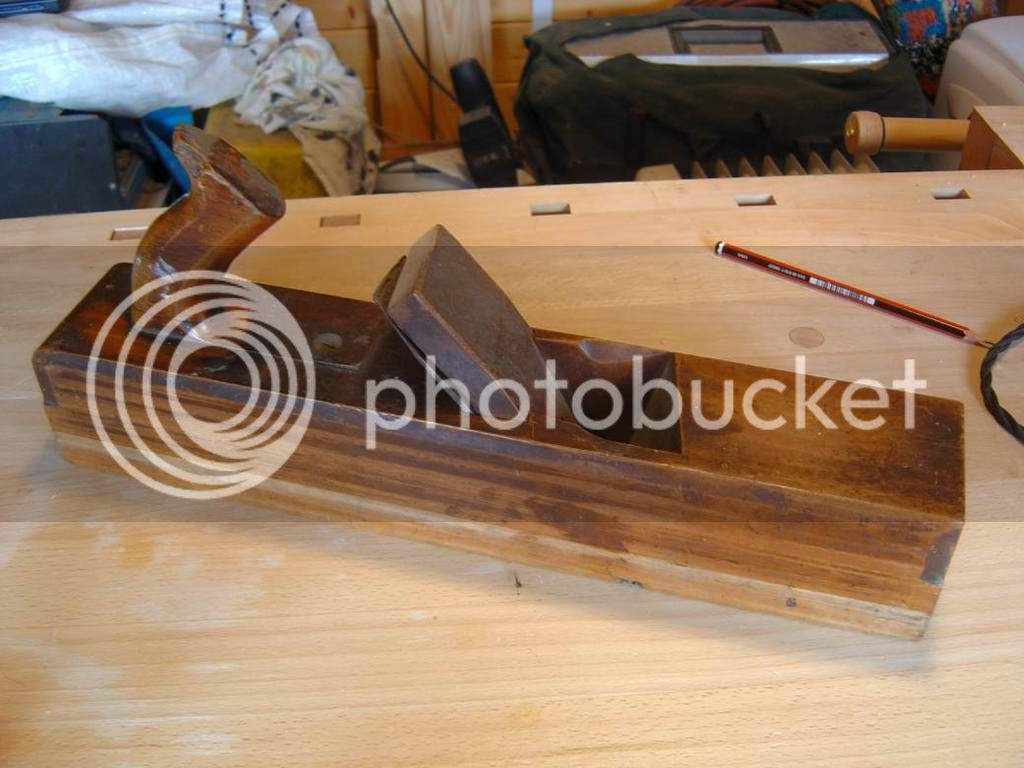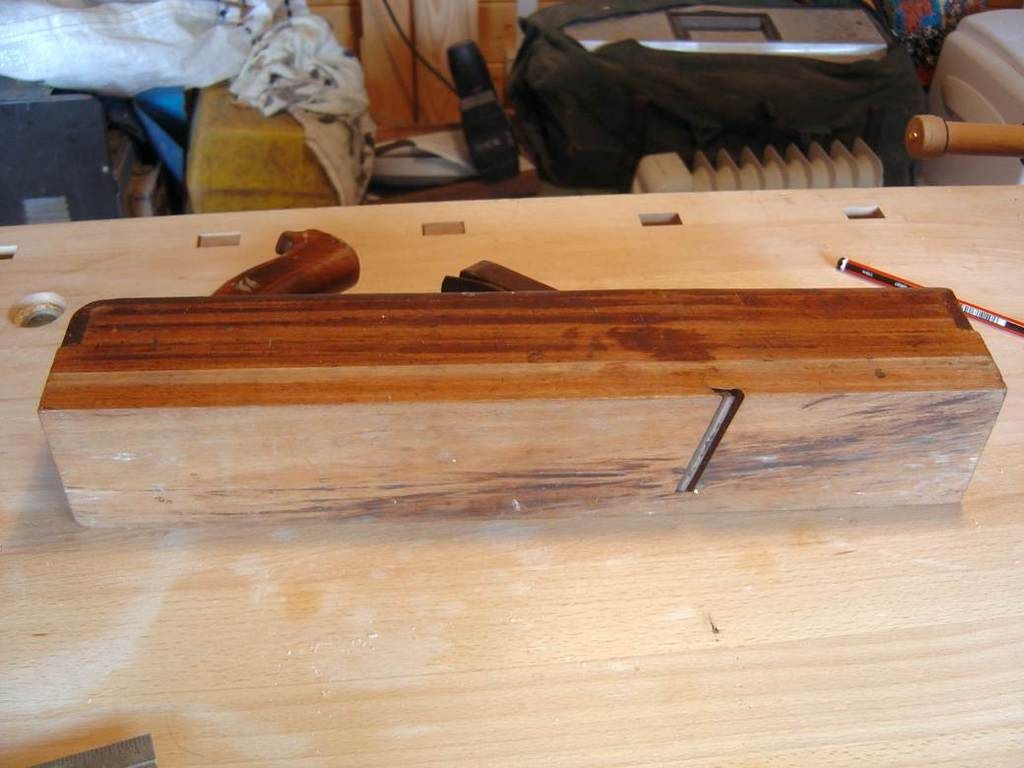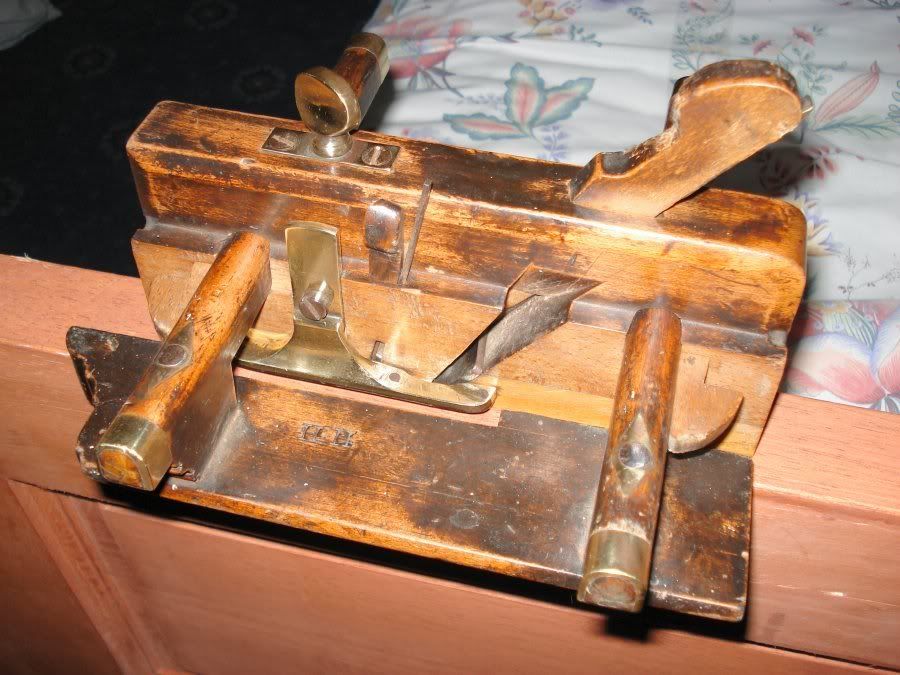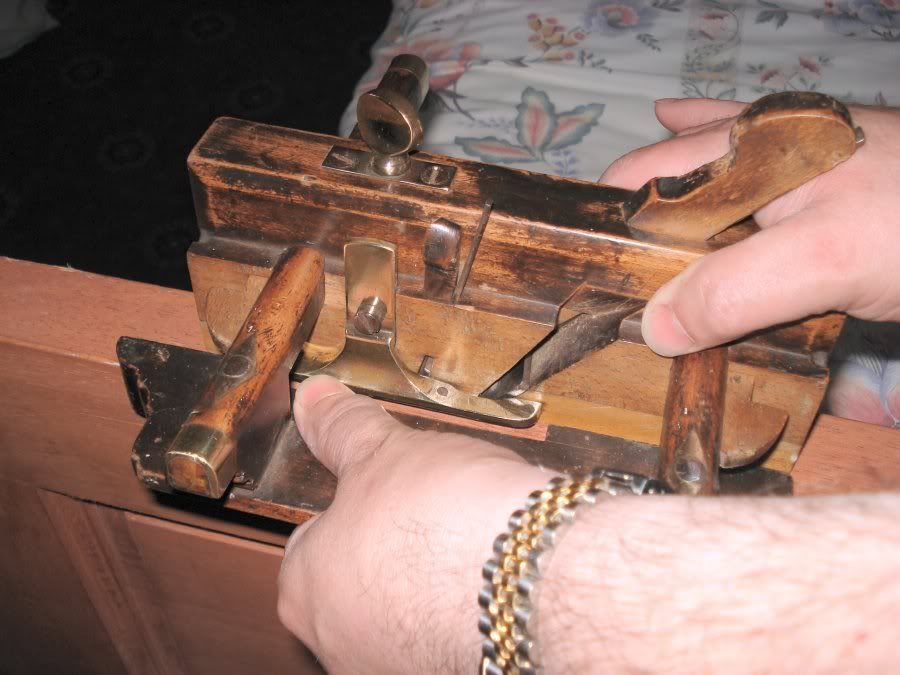jonbikebod
Established Member
I got this well worn plane from a car boot sale a while ago.
I have never been clear on what distinguishes a panel raising plane to a badger plane.

The plane is the size of a wooden jack, has the blade bedded at standard pitch with a 12º skew.

There is no nicker and no fence, the wear from a guiding baton is clear on the side. Presumably for cross gain work a knife run along the baton would do the job.
It obviously has done a lot of work in the past, the blade (Ward) is so worn the wedge has been cut down so it could still be adjusted. The handle has the horn broken off and has broken at the base as well.
What would you call it?
Jon.
[/code]
I have never been clear on what distinguishes a panel raising plane to a badger plane.

The plane is the size of a wooden jack, has the blade bedded at standard pitch with a 12º skew.

There is no nicker and no fence, the wear from a guiding baton is clear on the side. Presumably for cross gain work a knife run along the baton would do the job.
It obviously has done a lot of work in the past, the blade (Ward) is so worn the wedge has been cut down so it could still be adjusted. The handle has the horn broken off and has broken at the base as well.
What would you call it?
Jon.
[/code]







